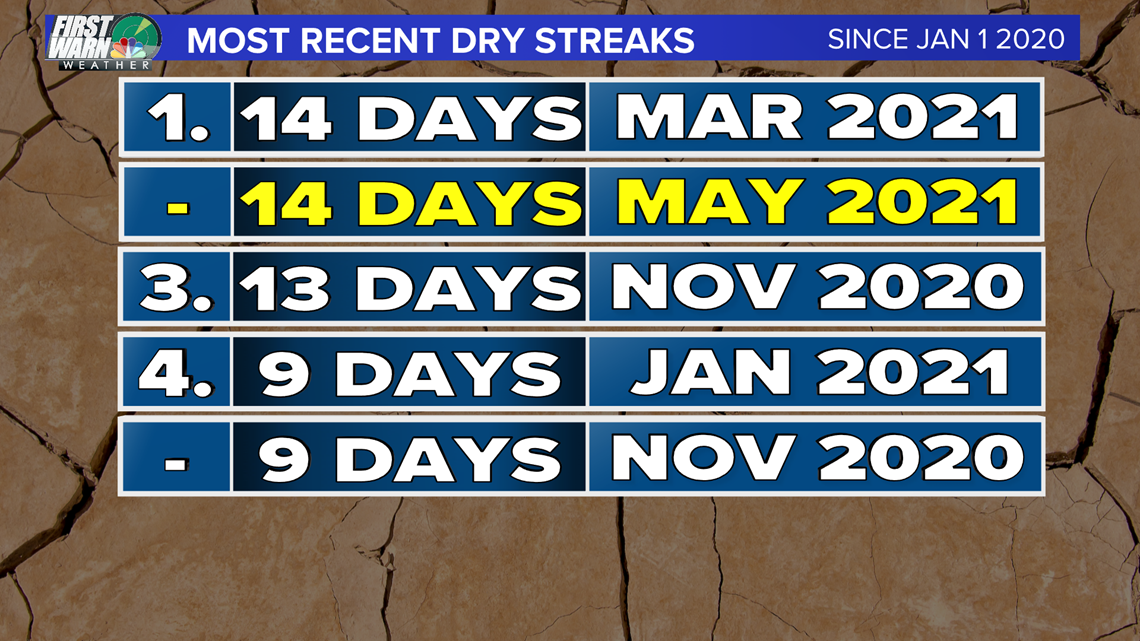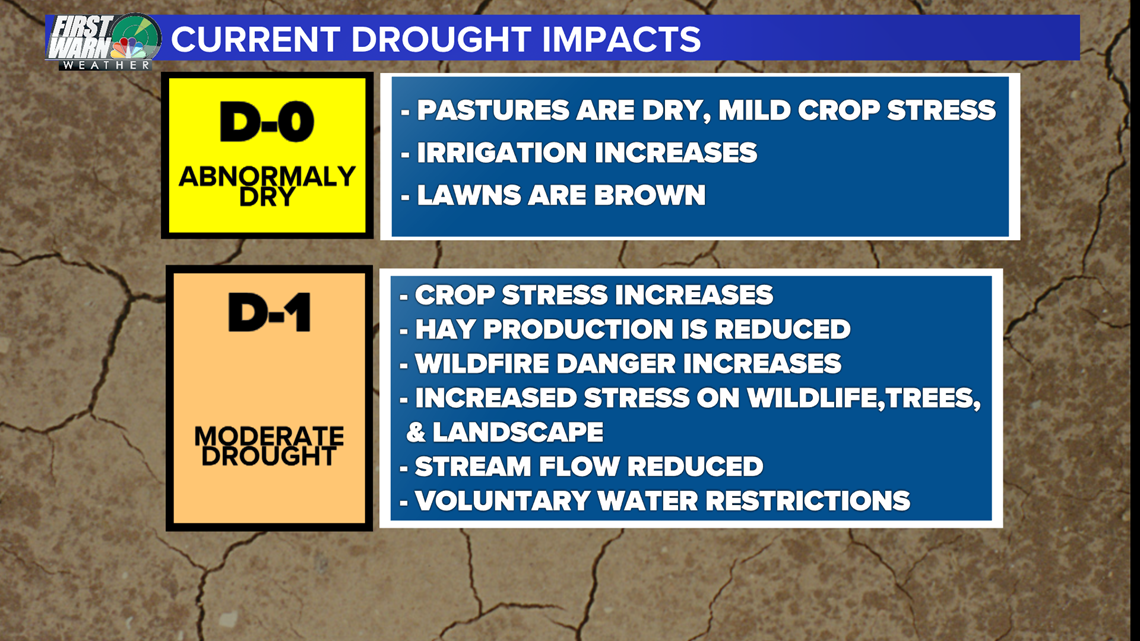CHARLOTTE, N.C. —
The Current Drought Monitor and Concerns:
Every Thursday morning the U.S. Drought Monitor updates its drought status per state in the United States. Last year this was not an issue for the Carolinas but since March, North and South Carolina have been slowly falling behind rain-wise after a wet start to 2021.
A drought status is more month to month than the yearly precipitation surplus. For instance, Charlotte's rainfall for the year (measured at Charlotte Douglas International Airport) is only slightly below normal. We have seen 16.80" of total rain as of May 27. Which only equates to a deficit of less than 0.5" of rain for the year.
The numbers above are concerning though. Since last Thursday (May 20, 2021) 14% more of North Carolina is under some level of drought and 5% for South Carolina.
Focusing on Charlotte, This is set to be the 14th day in a row without any measurable rainfall (which is anything that is 0.01" or more). We had a similar streak in March of this year, which truly began our journey to our current drought. This is also tied to one of the longest dry streaks since the beginning of 2020.


The Impacts:
There are 5 levels of the Drought Monitor:
- Dry (D0)
- Moderate (D1)
- Severe (D2)
- Extreme (D3)
- Exceptional (D4)
This week, over 28% of South Carolina is under moderate drought and over 48% for North Carolina. At D0 you will notice a brown lawn but there are no real impacts on agriculture. By the time you reach Moderate Drought, it starts stressing crops, water restrictions may be needed and fire danger is elevated.


A Red Flag Warning will be issued on a windy and dry day when burning should be avoided at all costs. Even at this point, be mindful of what Smokey the Bear has taught us heading into summer due to the current situation.
How to Fix This?
Reference the map below.


The worst drought is for the Eastern Carolinas.
Using a 3-month timeline:
Areas in red need 5-7" of rain the ABOVE NORMAL rainfall to be removed from drought status.
Areas in orange need 3-5" of rain the ABOVE NORMAL rainfall to be removed from drought status.
Areas in yellow need 1-3" of rain the ABOVE NORMAL rainfall to be removed from drought status.
Areas in green or blue are not affected.

